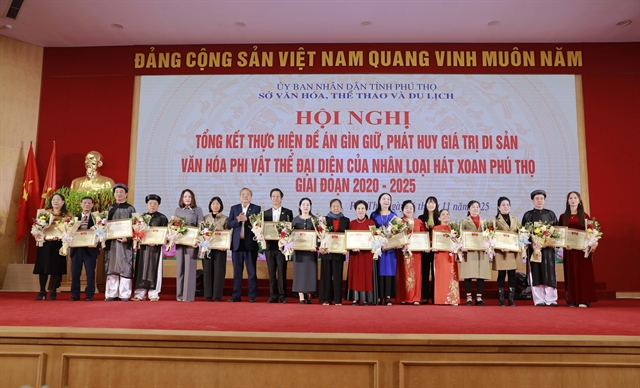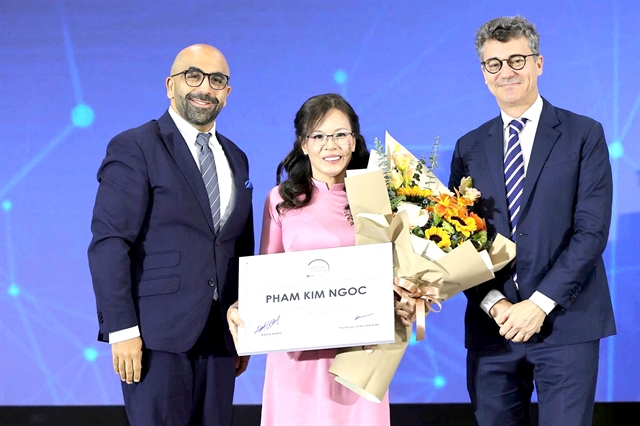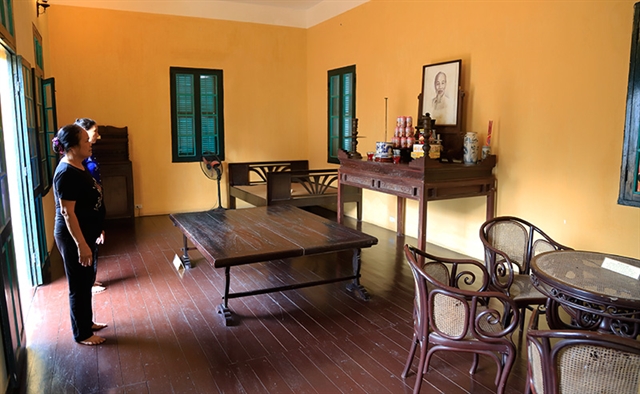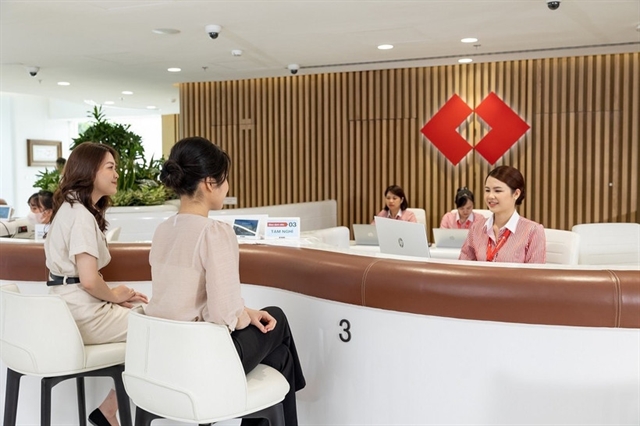 Life & Style
Life & Style


|
| Silk Weaving Space features stages of silk weaving and traditional tools of the craft. — VNA/VNS Photo Đinh Thị Thuận |
HÀ NỘI — Images and objects telling stories about the traditional craft of silk weaving are on display at the relic site of President Hồ Chí Minh at Vạn Phúc Village, Hà Nội's Hà Đông District.
The inauguration of the cultural space, or “Silk Weaving Space”, was launched by Hà Nội’s Department of Culture and Sports as a part of the activities to celebrate the 75th anniversary of National Resistance Day (December 19, 1946-2021).
Silk Weaving Space introduces to the public nearly 150 documents, artefacts, and images through its modern display, original art designs, and emotional highlights, divided into two main parts.
The first part takes visitors back to the history of Vạn Phúc Craft Village, enabling them to witness the stages of silk weaving and traditional tools of the craft like silkworms, silk cocoons, silk reels, bobbins, shuttles and looms.

|
| Visitors will have a chance to see the historical household items that were used by President Hồ Chí Minh during his stay and work at the village from December 3-19, 1946. — Photo.thanhdoanhanoi.gov.vn |
Visitors will also have chance to see the historical household items like the bed, the chair or small pillow that was used by President Hồ Chí Minh during his stay and work at the village as well as the set of tables and chairs on which the President and other comrades in the Standing Committee of the Party Central Committee regularly discussed and approved the Call for the National Resistance in 1946.
The Organising Committee also restored the room where Hoàng Quốc Việt, Secretary of the Northern Party Committee, used to work in 1938. Some of the highlighted items are the newspapers transferred by the Secretary to local patriot Nguyễn Văn Dương’s weavers to enlighten them with the revolutionary spirit.
According to the Organising Committee, Silk Weaving Space aims to educate the patriotism and revolutionary traditions among people from all backgrounds, especially the younger generation, while arousing trust, pride and gratitude for the Party, President Hồ Chí Minh, patriotic soldiers and party members with significant contributions to the national revolutionary cause.
At the end of 1946, due to increasing French colonial aggression and preparations for invading the country for the second time, President Hồ Chí Minh came to live and work at villager Nguyễn Văn Dương’s house in Vạn Phúc Village, Hà Đông District from December 3-19, 1946 to prepare for the upcoming resistance war.
In two days, December 18 and 19, 1946, he chaired the expanded Central Standing Committee Conference, unifying to launch a nationwide resistance war against the French colonialists.
At this house, the President drafted the Call for National Resistance. The appeal was broadcast on the Voice of Vietnam on the night of December 19, 1946, officially marking the beginning of Việt Nam’s long-term resistance war.
President Hồ Chí Minh’s house where he lived and worked in Vạn Phúc Village in December 1946 has become one of 14 places in the system of museums and memorials. The memorial house was preserved and classified as a National Historical Relic Site in 1975.
It was renovated and expanded by Hà Nội’s authority in 2016, on the occasion of the 70th anniversary of the National Day of Resistance. The renovation project was finished last year. — VNS




